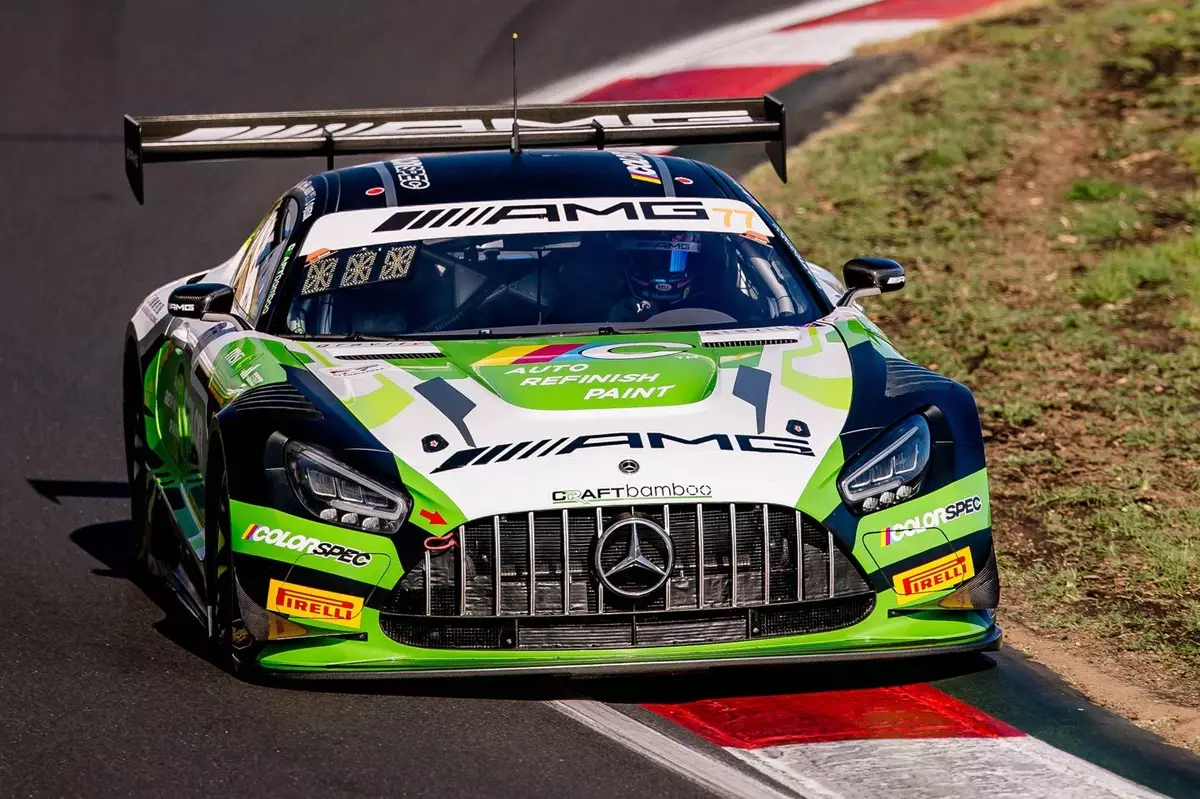The Bathurst 12 Hour is an iconic endurance race that attracts teams and drivers from around the globe, each vying for victory on the challenging Mount Panorama circuit. This year, the qualifying rounds produced an exhilarating display of driving prowess, with Lucas Auer from Austria securing pole position in his Mercedes-AMG GT3 Evo. In this article, we will dissect the qualification results, examining key performances and unexpected outcomes, while emphasizing the significance of strategic preparation in endurance racing.
Auer’s Ascendancy: The Art of Pole Position
Lucas Auer’s performance stands out as a testament to both individual skill and team strategy. By clocking a remarkable lap time of 2m01.2760s, Auer showcased not only his racing acumen but also the finely tuned capabilities of the Mercedes-AMG GT3 Evo. His lead of 0.125s over his nearest competitor is noteworthy given the marginal differences observed in the first part of qualifying, where the top five drivers were separated by a mere 0.136s. This gap indicates not only Auer’s exceptional control and speed but also points to the meticulous engineering advancements made by Mercedes in developing their racing vehicles.
The strategic decisions made during the qualifying sessions are also deserving of scrutiny. The split format utilized during the qualifying rounds required drivers and teams to adapt to limited track time while maximizing performance. Auer’s transition from provisional pole to achieving the ultimate position illustrates the importance of strategic planning, driving discipline, and making insightful choices about when to push the limits.
While Auer’s performance was expected, the emergence of Ricardo Feller as a strong contender in his Audi marked a significant moment in the qualifying rounds. At just 24 years old, Feller’s second-place finish not only highlights his burgeoning talent but also underscores the competitive nature of endurance racing, where newcomers can disrupt the hierarchy. Teaming with Supercars driver Broc Feeney and GT champion Liam Talbot, Feller is primed to leverage his qualifying performance into a successful race strategy.
His confidence on track may serve as an inspiration to other rising stars in motorsport. Feller’s result signals a shift in competitive dynamics; while established stars often dominate, fresh talent can bring unpredictability to the race. It reinforces the idea that Bathurst is a crucible for potential champions, paving the way for new narratives in the realm of motorsports.
The Veterans and Their Trials: Engel and Van der Linde
The performances of seasoned drivers such as Maro Engel and Sheldon van der Linde reveal the high stakes associated with this event. Engel’s uncharacteristic session — where he did not set a time until the latter part of qualification — raises questions about race strategy and the inherent risks taken by even the most experienced crews. His third-place finish minimizes the setbacks he faced during qualifying, yet it also serves as a reminder of the unpredictable nature of racing.
Conversely, van der Linde, the previous year’s polesitter, positioned himself at fourth and reflects a steadier approach under pressure. This juxtaposition between the two drivers‘ experiences emphasizes endurance racing’s psychological component: how drivers and teams can manage expectations while navigating the intense competitive atmosphere.
The qualifying rounds also delivered surprising outcomes for several anticipated frontrunners. Notably, last year’s runner-up in the race, Matt Campbell, was unable to secure a top-ten starting position, missing out by a mere 0.088s. This narrow margin serves as a stark reminder of how finely balanced this competition can be and the complexities involved in qualifying strategies — particularly when considering vehicle reliability and driver performance under pressure.
Moreover, the WRT BMW team, which appeared promising early in the sessions due to Raffaele Marciello’s strong showing, fell short of expectations due to technical challenges. The situation offers a glimpse into the unpredictable challenges teams face, revealing the criticality of contingency planning and the significance of vehicle reliability in racing.
As the Bathurst 12 Hour race approaches, the qualifying results set an intriguing stage for what promises to be a thrilling contest. With Auer’s dominant performance, alongside notable showings from both rising stars and seasoned veterans, the race is poised to showcase not only raw talent but also strategic prowess. The interplay of skill, strategy, and unpredictability will undoubtedly define this year’s event at Mount Panorama, making it a must-watch for motorsport enthusiasts around the globe. As teams prepare for the ultimate test of speed and endurance, the race will no doubt serve up unforgettable moments and legendary stories destined to resonate in the annals of racing history.


Napsat komentář